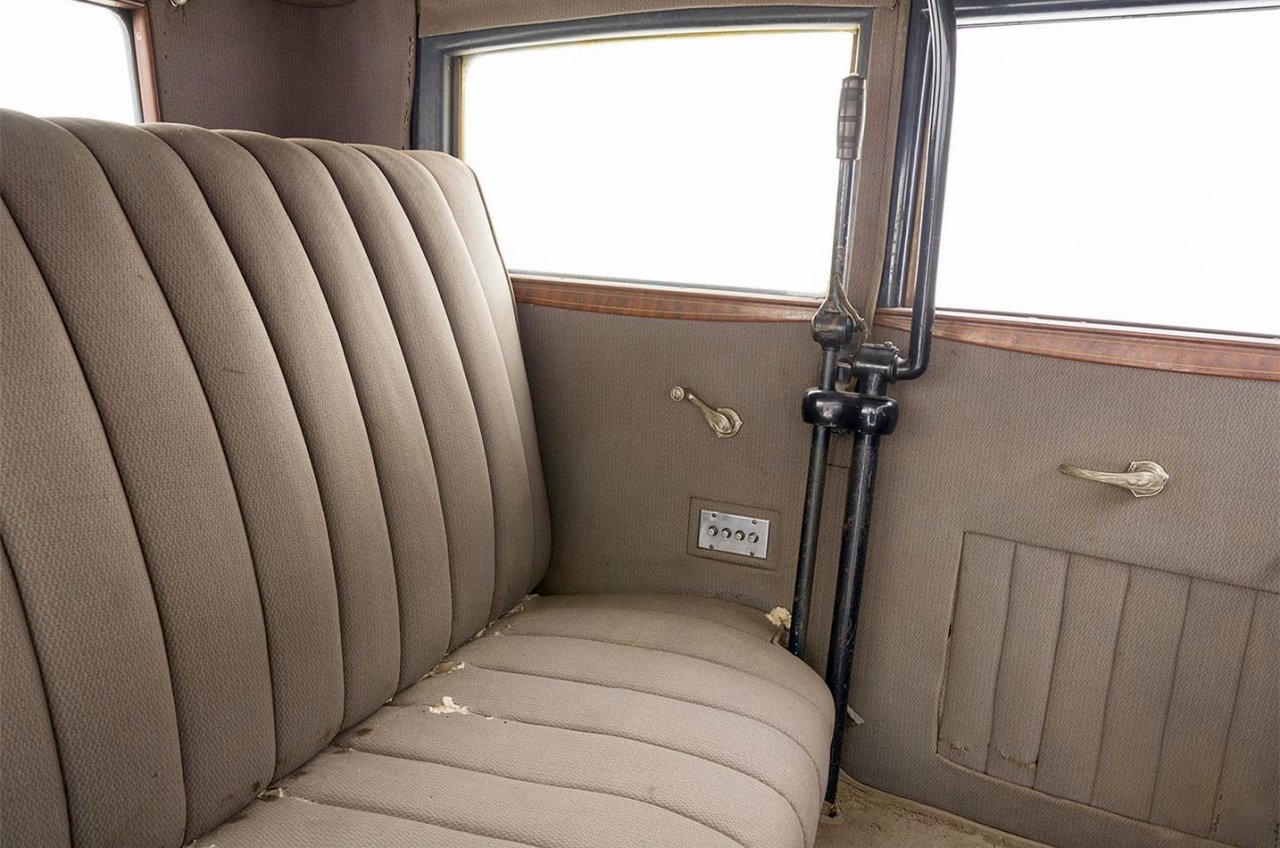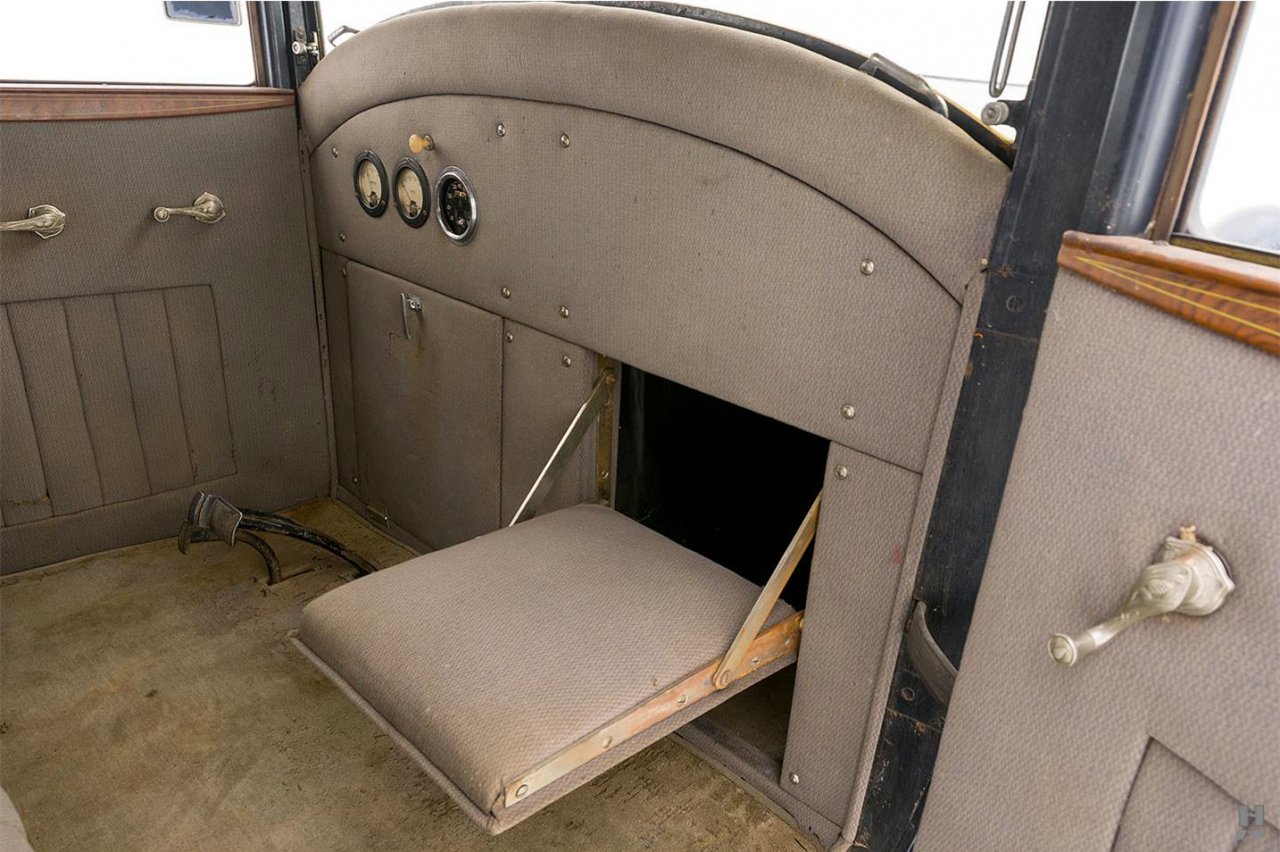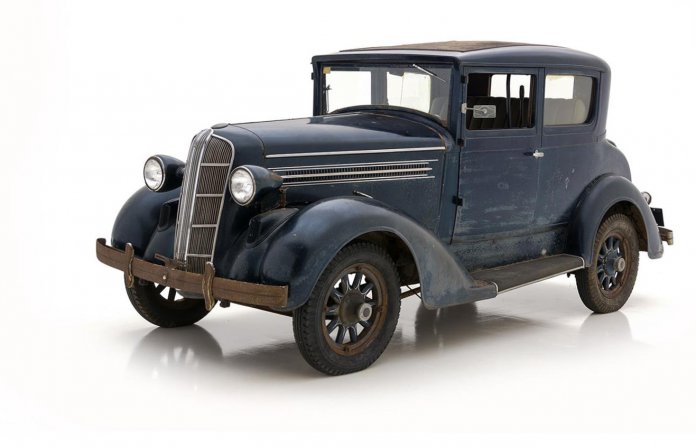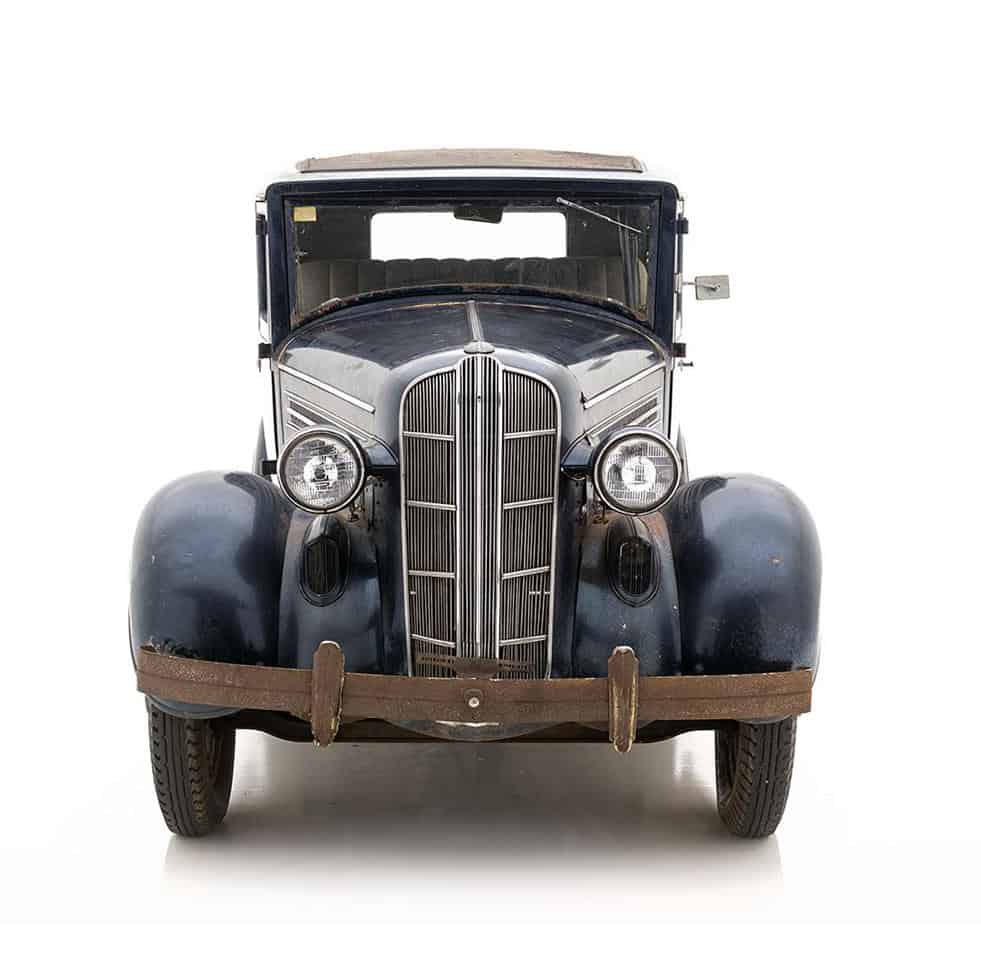If you could ignore the headline and caption and see only the photograph above, you sharp-eyed automotive historians might assume that the Pick of the Day is some sort of automotive concoction created by placing a late 1930s Willys greenhouse atop a late 1930s Dodge body.
And you’re be pretty close, because that’s just what Detroit Electric was doing as it struggled against the tide for viability in the automotive marketplace with its battery-powered vehicles.
The Pick of the Day is, indeed, a rare surviving 1937 Detroit Electric Model 99C being advertised on ClassicCars.com by a dealer in St. Louis, Missouri.

Who knew that Detroit Electric, or any of the early EV producers, was still in business that far into the 20th Century (Detroit Electric ended production in 1939)? Or that its drivers still steered its vehicles with tillers instead of steering wheels?
The Anderson Carriage Company was founded in 1884 in Port Huron, Michigan, but William C. Anderson moved his company to Detroit in the mid-1890s and in 1907 it moved again, not physically but from producing carriages to cars.
In the early days of the American automobile, about one-third of cars were powered by petroleum, another third by steam and the other third by electric batteries. Anderson was a leader in that final category, in part because of marketing his cars to urban-dwelling women who didn’t like the idea of powering up a boiler or the danger of hand-cranking an engine.
Detroit Electric cars (Anderson retired in 1918 and the company’s name changed a year later) also were popular because of their styling, which included a faux-radiator front section and a tall, glass-enclosed passenger compartment that resembled a china closet. And with a tiller that pivoted out of the B pillar, the interior was roomy and uncluttered.

Of course, tastes change, so in an effort to give its vehicles a more-modern appearance, the company started buying bodies from Willys-Overland, and then from Dodge, and thus the look of today’s car.
“It isn’t known precisely how many of these later Detroits were built, and they are a rare sight, indeed,” the dealer notes in the advertisement.
“This rare and unusual 1937 Detroit Electric Model 99 is an incredibly well-preserved survivor. It is a very late production model, one of a mere handful of known examples featuring the Dodge-sourced bodywork. It benefits from recent, sympathetic servicing and is offered in good working order, with a charming and endearing patina.”
The Model 99 was the long-wheelbase version of the Detroit Electric, with 112 inches between axles. The company also produced a model 97 on a 100-inch platform.
The dealer points out that “While Detroit sought to make the styling more conventional, the cabin is anything but that. The parlor-style seating arrangement places the driver on the rear bench seat, with a rear-facing jump seat and no traditional dash or steering column. The Model 99 was undoubtedly one of the last passenger cars sold with tiller steering.

Tiller pivots from B pillar 
“Like the body, the cabin is exceptionally well-preserved, with original gray fabric trim in very good order. A few blemishes and minor tears are expected, yet overall, the seats, panels, and carpets are surprisingly intact. Fittings like the window winders and door handles have lovely, ornate details reflecting the Model 99’s high-end status.”
Appearances aside, “The beauty of early electric vehicles of this type is in their mechanical simplicity. Without a fuel system, cooling system, or many moving parts to maintain, they’re refreshingly straightforward to own and enjoy.”
The Standard Encyclopedia of American Cars reports that Detroit Electric advertised that its cars would “take you anywhere that an automobile may go with a milage radius farther than you will ever care to travel in a day.” It advertised a range of 80 miles between battery charges, although in an endurance run, a Detroit Electric reached 211.3 miles on a single charge.
“This example has been fitted with new, updated deep-cycle batteries in the front and rear compartments,” the dealer reports. “It drives quite well and needs little to enjoy to the fullest on the road.
“It would also be a most welcome participant in preservation-class shows or in gatherings of historically significant alternative-fuel vehicles that are an increasingly relevant part of international concours events.”
The car is being offered for $72,500. To view this listing on ClassicCars.com, see Pick of the Day.








Very interesting. Only wish there were more pictures of the vehicle.
I can buy a Tesla that gets 500 mile of range or a Lucid Air with the same milage.
Maybe, $15,000.00 is more like the value
Dude, that is not the point ! 1937 ! Still working ! That is the point ! 1of ???? That is the point !
I agree with Falconman. I wish that would show the tiller though.
It is a beauty! more photos please – tiller especially!
Deep cycle? Spend a little extra and really modernize it with some batteries that are technologically relevant to at least the last decade.